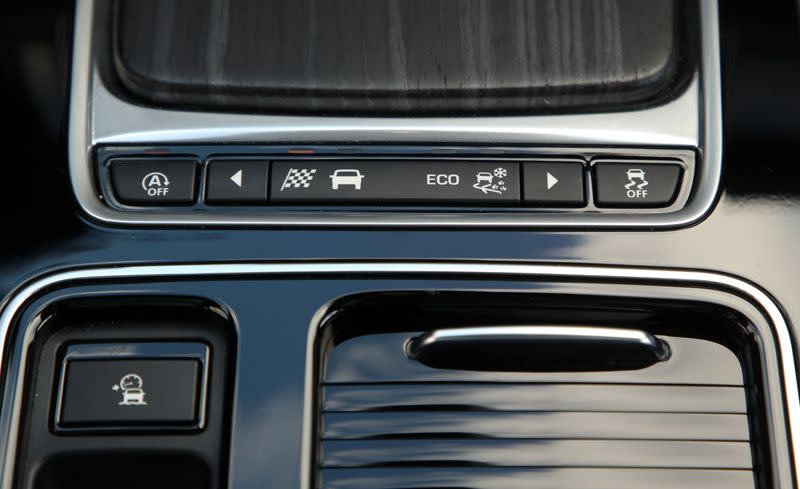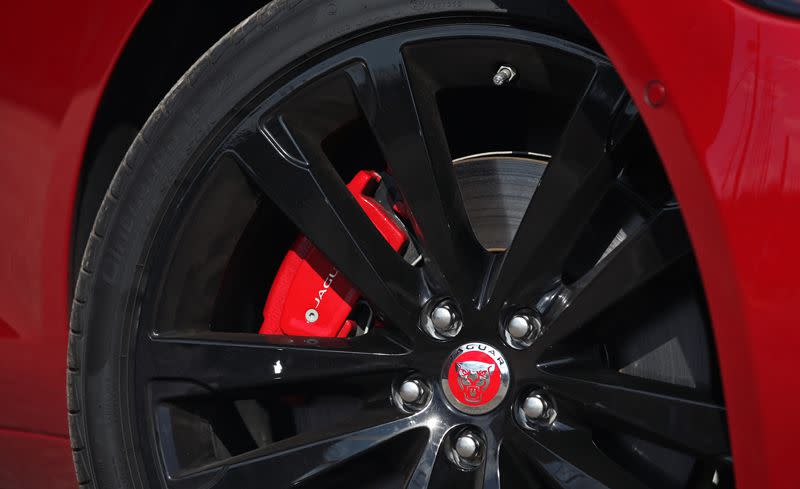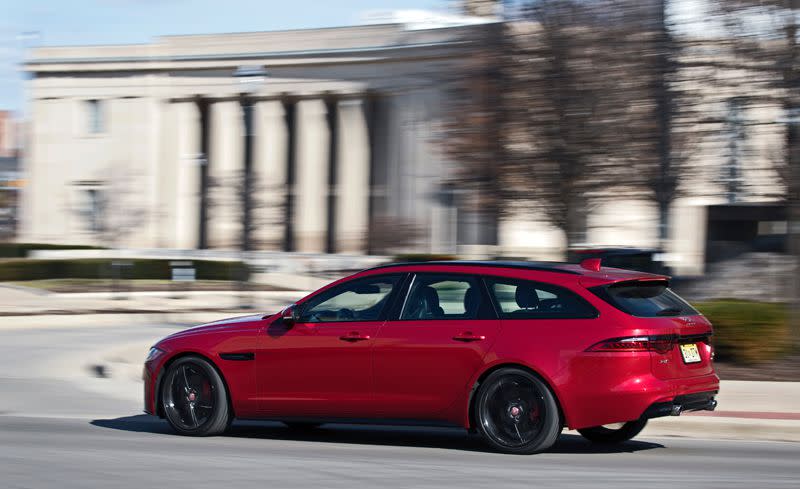Performance and Driving Impressions

Performance and Driving Impressions Rating:

The Sportbrake offers an enthusiastic chassis tailored for spirited driving rather than plush family travel. A firm ride and taut body control creates a planted feel, but we believe the standard U.S. market all-season tires (European models benefit from summer-only performance rubber) hold it back from its true potential.
The negative side of the tight suspension setup is that the Sportbrake is not nearly as isolated from road irregularities as vehicles such as the Volvo V90 and the Mercedes-Benz E400 Wagon. It’s still comfortable but a less refined experience, something that will force buyers to think about whether they prefer a wagon that hugs corners or one that offers a plush, relaxed ride.
Acceleration
The test numbers say that the XF Sportbrake is an average accelerator relative to its power output and that it looks weak versus the quicker Panamera Sport Turismo. The driving experience tells a different story; compared with most cars on the road, 5.1 seconds from zero to 60 mph is quick. Maybe it’s the supercharger whine, maybe it’s the ability to flick through the gears with the paddle shifters, but the Jag wagon moves out with plenty of pull, and its all-wheel drive makes for fun, impressive, drama-free launches from stoplights.
Test Results: Acceleration

Ride, Handling, and Steering
The XF’s chassis puts the sport in Sportbrake. The steering is crisp and responsive to your commands, and effort builds progressively as the cornering forces increase. The firm suspension clearly transmits the road surface. Four driving modes, selected via buttons on the center console-AdSR (Adaptive Surface Response), Eco, Normal, and Dynamic-alter the car’s responses. AdSR is intended for use during slippery weather and assists with low-traction launches. Eco is for better fuel economy, Normal aims for the most comfortable ride, and Dynamic tightens body control for sharper handling.
Test Results: Maximum Cornering Capability
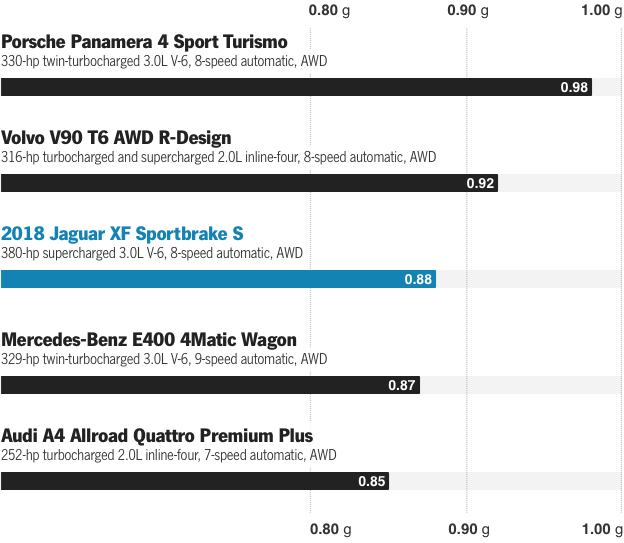
Braking
Sometimes, how a car feels does not correspond to its test numbers, and that is the case here. The XF, wearing Pirelli Cinturato all-season tires, stopped from 70 mph to zero in a long 173 feet. The next-best car tested here was the V90 at 157 feet, and the Panamera topped the competition at 147 feet. The Jag didn’t feel this reticent to stop, however. The pedal response was linear and appropriate to the pressure applied.
Test Results: Maximum Braking Capability

Curb Weight and Weight Distribution
With the Sportbrake, Jaguar had to carefully balance sporting tendencies with practicality, and the XF’s excellent front-to-rear weight distribution-which bested all others tested here with a near 50-50 front-to-rear split-no doubt helped. Even a few percentage points of difference in weight distribution can be felt in spirited driving.
Test Results: Curb Weight and Weight Distribution
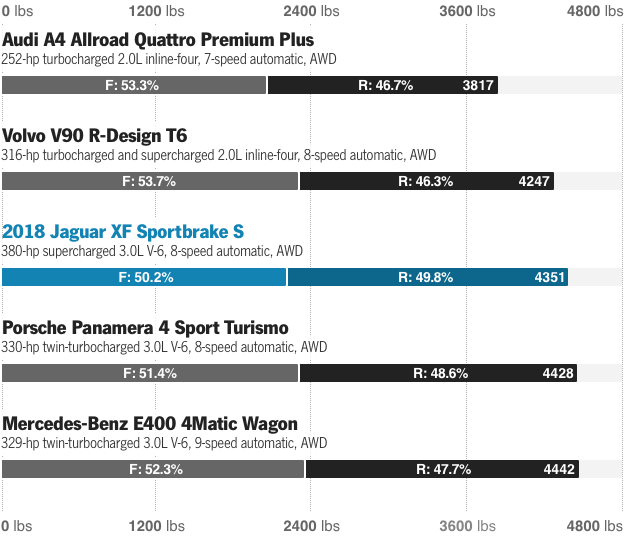
You Might Also Like

 Yahoo Autos
Yahoo Autos 